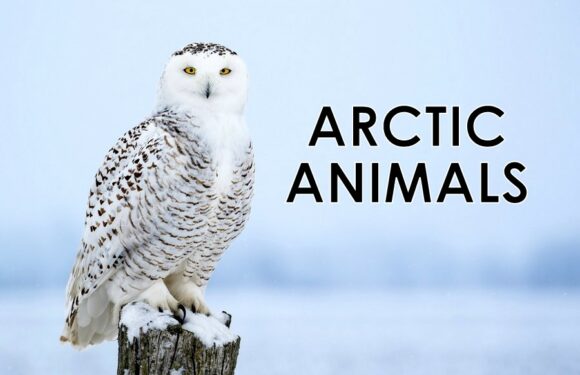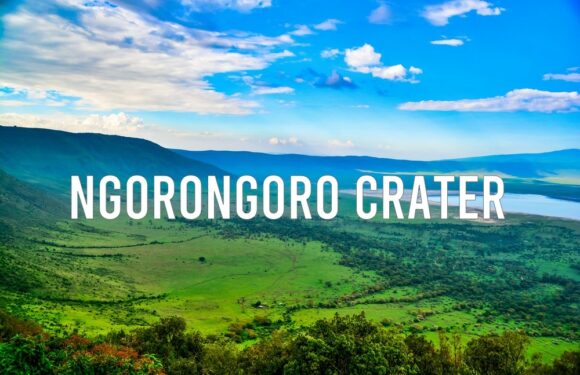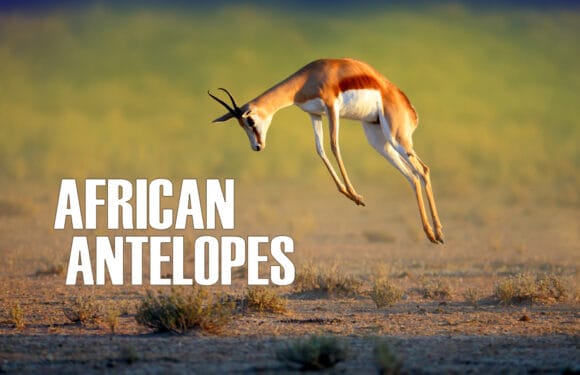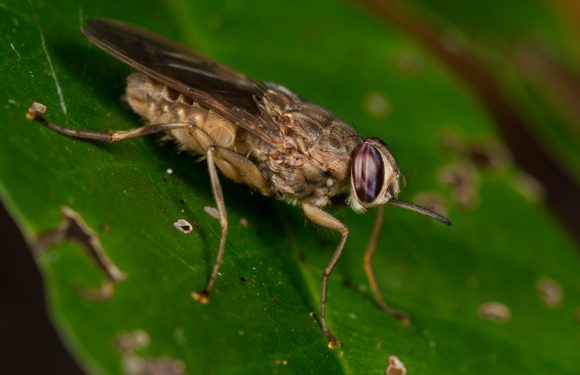
Are antelopes and gazelles the same?
Antelopes are hoofed, deer-like mammals belonging to the family Bovidae. A gazelle is a type of antelope. Other types of antelopes include impala, oryx, waterbuck, eland, and wildebeest.
Ancestry of Antelopes and Gazelles
The Bovidae family, which includes antelopes, cattle, yaks, bison, buffalo, sheep, and goats, first appeared around 20 million years ago during the Miocene epoch. Fossil records show that early bovids were smaller and less specialized than their modern descendants. Over millions of years, they developed traits that allowed them to exploit different ecological niches. Their size, shape, and behavior are a result of adaptions to different environments.
Antelopes are a diverse group within the Bovidae family, spread across Africa and parts of Asia. Gazelles are a subset of antelopes. There are 91 species of antelope, 18 of which are gazelle and classified in the genera Gazella.

The evolutionary success of antelopes and gazelles is largely due to their ability to adapt to changing environments. Key adaptations include: 1) their speed and agility, which are essential for evading predators in open habitats, 2) horns used for defense and establishing dominance within herds, 3) four-chambered stomachs to extract nutrients from fibrous plant material, and 4) herd behavior to provide protection against predators and increase reproductive success.
Physical Differences Between Gazelles and Antelopes
Size, Speed and Agility
The size of antelopes varies significantly across species. For example, the eland can weigh up to 2,200 lbs (1,000 kg), while the tiny dik-dik weighs only 15 lbs (7 kg).


While not all antelopes are known for their speed, many, like the springbok, can reach impressive speeds of up to 55 mph (88 km/h). However, larger species tend to prioritize strength and endurance over speed. Antelopes generally have larger, more robust bodies compared to gazelles.
Gazelles are generally medium-sized antelopes. They have slender bodies and a light build, which contributes to their extreme agility and speed. A Thomson’s gazelle, for example, weighs around 55 lbs (25 kg) and can reach speeds of 40 mph (64 km/h).

Horns
The horns of antelopes can vary greatly in shape and size. They are generally unbranched and permanent, meaning they do not shed. Some are long and straight while others are curved, spiraled, or crescent-shaped.
Gazelles, on the other hand, usually have long, slender, and slightly curved horns. Both males and females of many gazelle species possess horns, unlike many antelope species where typically only the males have them.


Coat and Color
Antelopes have a wide range of coat colors and patterns, often with brown, grey, or reddish hues and distinctive markings that help with camouflage in diverse environments. Gazelles tend to have lighter, more uniform coats, often sandy or fawn-coloured, which blend well with the open savannah and desert landscapes.


Behavioral Differences Between Gazelles and Antelopes
Habitat Preferences
Antelopes can be found in a variety of environments. They have adapted to survive in diverse ecological conditions from arid deserts to lush savannahs, from swamps to mountainous regions. Gazelles prefer open plains and savannahs, where their speed and agility give them advantages for survival. They thrive in dry, grassy environments and are well-suited to hot, arid climates.


Diet and Feeding Habits
Both antelopes and gazelles are herbivores, feeding on grasses, leaves, and fruits. Their feeding habits can be categorized as grazers (primarily feed on grasses), browsers (feed on leaves, shrubs, and trees), or mixed feeders (consume both grasses and leaves). Antelopes have multi-chambered stomachs that enable them to digest tough plant matter.
Social Structure


Social structures among antelopes vary. Some, like the impala, form large herds that provide protection through numbers. Others, like the duiker, are more solitary or form small groups. Gazelles tend to form smaller, tight-knit herds.
Antelopes and Gazelles in Tanzania
Africa is home to over 70 species of antelope. These antelopes range in size, habitat preference, and behavior. While many antelope species in the country have stable populations, several are threatened by habitat loss, poaching, and human-wildlife conflict.
Gazelles, especially Thomson’s gazelle, are quite common in Tanzania, particularly in the northern regions where they inhabit a variety of ecosystems. Tanzania’s diverse landscapes provide ideal habitats for several species of gazelles. On safaris, tourists are guaranteed to see gazelles in the Serengeti, Ngorongoro Crater, Tarangire and Ruaha National Park.

Here is a list of African gazelle and other antelope species:
Gazelles
- Addra Gazelle (Nanger dama ruficollis)
- Cuvier’s Gazelle (Gazella cuvieri)
- Dorcas Gazelle (Gazella dorcas)
- Rhim Gazelle (Gazella leptoceros)
- Red Gazelle (Eudorcas rufina)
- Speke’s Gazelle (Gazella spekei)
- Soemmerring’s Gazelle (Nanger soemmerringii)
- Thomson’s Gazelle (Eudorcas thomsonii)
- Grant’s Gazelle (Nanger granti)
- Red-fronted Gazelle (Eudorcas rufifrons)
- Dama Gazelle (Nanger dama)
Other Antelopes
- Bongo (Tragelaphus eurycerus)
- Bushbuck (Tragelaphus scriptus)
- Blesbok (Damaliscus pygargus phillipsi)
- Sitatunga (Tragelaphus spekii)
- Nyala (Tragelaphus angasii)
- Greater Kudu (Tragelaphus strepsiceros)
- Lesser Kudu (Tragelaphus imberbis)
- Eland (Common Taurotragus oryx, and Giant Taurotragus derbianus)
- Suni (Neotragus moschatus)
- Blue Duiker (Philantomba monticola)
- Red Forest Duiker, various species
- Yellow-backed Duiker (Cephalophus silvicultor)
- Black Duiker (Cephalophus niger)
- Bay Duiker (Cephalophus dorsalis)
- Dik-dik (Several species including Madoqua kirkii, Madoqua guentheri)
- Impala (Aepyceros melampus)
- Various Gazelles including Thomson’s (Eudorcas thomsonii), Grant’s (Nanger granti), and Dama (Nanger dama)
- Wildebeest (Blue Connochaetes taurinus, and Black Connochaetes gnou)
- Hartebeest, various subspecies
- Topi (Damaliscus lunatus), Tsessebe (Damaliscus lunatus lunatus), Bontebok/Blesbok (Damaliscus pygargus)
- Springbok (Antidorcas marsupialis)
- Gerenuk (Litocranius walleri)
- Oryx, including Gemsbok (Oryx gazella)
- Roan Antelope (Hippotragus equinus)
- Sable Antelope (Hippotragus niger)
- Waterbuck (Kobus ellipsiprymnus)
- Lechwe (Red Kobus leche, Kafue Flats Kobus leche kafuensis, and Black Kobus leche smithemani)
- Kob (Kobus kob)
- Puku (Kobus vardonii)
- Common Reedbuck (Redunca arundinum), Mountain Reedbuck (Redunca fulvorufula)
- Addax (Addax nasomaculatus)
- Klipspringer (Oreotragus oreotragus)
- Steenbok (Raphicerus campestris)
- Sharpe’s Grysbok (Raphicerus sharpei)
- Oribi (Ourebia ourebi)
- Saiga Antelope (Saiga tatarica) – Though primarily found in Central Asia, they are included in broader discussions of antelopes.
This list attempts to cover a broad spectrum of African antelopes. Due to the dynamic nature of wildlife taxonomy, new species may be described, or classifications may change, reflecting the ongoing exploration and study of Africa’s rich biodiversity.




























































